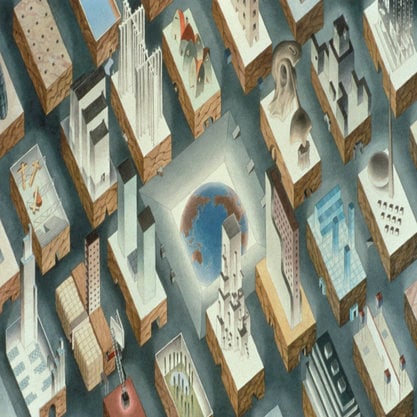Article
Biomorphism By Botar, Oliver
Article
Biomorphism is a 20th-century style of painting, sculpture, photography and design with roots in the late 19th century. It is characterized by what are often termed “organic” forms: curvilinear rather than angular lines and surfaces, presumably more typical of biomorphs (life forms) than orthogonal arrangements.
The term “biomorph” was coined by English anthropologist Alfred Cort Haddon in 1895 to refer to designs derived from animate sources. It was applied to modernist art by English critic Geoffrey Grigson in 1934, and was soon adopted by Alfred Barr in Cubism and Abstract Art, his 1936 account of modernist movements. While Barr used it to designate one of two styles of abstraction (geometric abstraction was the other), the term has been used for both abstracted but recognizable depictions (usually plants, animals or geological formations) and non-mimetic or difficult-to-decipher curvilinear forms.

